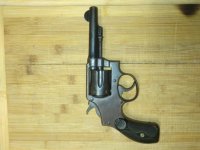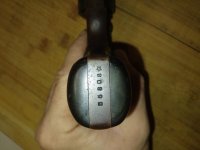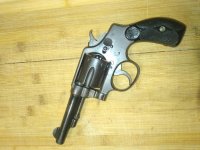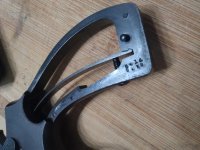The star after the serial number is referred to as the re-work mark. It indicates by itself that the gun has been repaired in some way after it was first issued. The numbers stamped on the lower, left front of the frame indicate the gun was sent back to the factory in May, 1914 and September, 1918. The re-work star could refer to either date. There is no way to know what work was done on either date, it could be anything from a major component replacement to a re-finish. There is no re-finish mark, but I am not sure that would be applied to a gun this early. I can't read the tiny stamp on the heel of the frame, but it could be a B in a diamond as Wiregrassguy said.
Note: Maybe you can read the dates better, but looking at them again the last number month could be either 8 or 9, and the year 1918 or 1919. I can't be sure.




